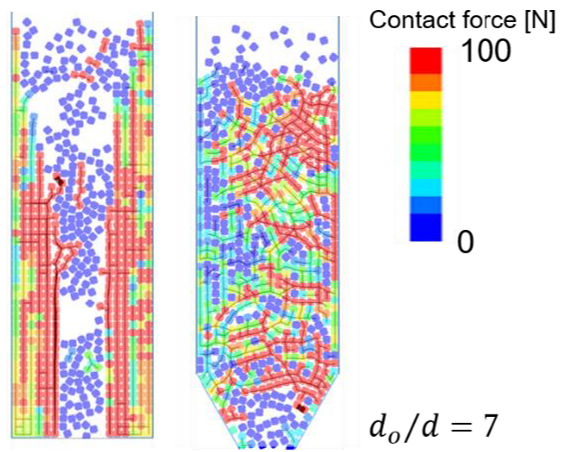
Ahmed Hafez Abdelaziz (KAUST) will present his work on Particle-laden fluid flow and clogging in porous media: Physical processes.
Abstract
Colloids and suspensions are common in energy geo-engineering applications, from natural processes such as fine particles suspended in subsurface water and oil, to engineered fluids such as drilling muds, proppants and remediation fluids. Suspended particles can interact during flow through magnetic, electrical or chemical forces, which result in aggregation, flocculation and self-assembly. Aggregates can form clogging arches that arrest fluid flow if the particle size is comparable to the outlet size. Clogging can be undesirable, result in process disruptions, and reduce formation permeability. In other situations, however, clogging can be useful to prevent drilling fluid leakages in the subsurface, control hemorrhages resulting from injuries or hinder contaminant transport to groundwater resources. This work explores different types of complex fluids using pore-scale and fracture-scale experimental, analytical and numerical techniques. We place particular emphasis on particle-level processes and interaction forces:
- Mechanical contact forces: Particle shape emerges as an important dimension in particle mobility and clogging at the pore-scale, as it determines the distribution of contact forces. Most studies have focused on the motion and clogging of spherical particles; our work has addressed the effect of particle shape and anisotropy on clogging and strength development. Complementary discrete element simulations reveal the complex interlocking mechanisms, arch geometries and force chains for different particle shapes.
- Magnetic forces: Magnetorheological flow control emerges as a viable clogging alternative in large flow channels and fractures. Experiments and finite element simulations with a newly designed magnetic mud show that the suspended iron particles accumulate around magnetic poles and gradually form a plug that stops fluid flow (flow resumes once the magnetic field is removed). Another complementary study investigates the granular self-assembly of engineered magnetic particles to form large architectures in turbulent flow conditions.
- Chemical / capillary forces: Bentonite-cement-oil mixtures exhibit surprisingly fast hydration and may be used for fluid loss control into large-aperture fractures. Linear and radial flow experiments reveal the complex interactions between concurrent processes: spontaneous imbibition, the release of hydrated ions during cement hydration, bentonite flocculation, and enhanced permeability.
Findings from this research have important implications to a wide range of disciplines including grain transport, mineral processing, geothermal energy generation, oil drilling, pedestrian dynamics, drug delivery and even space exploration.


